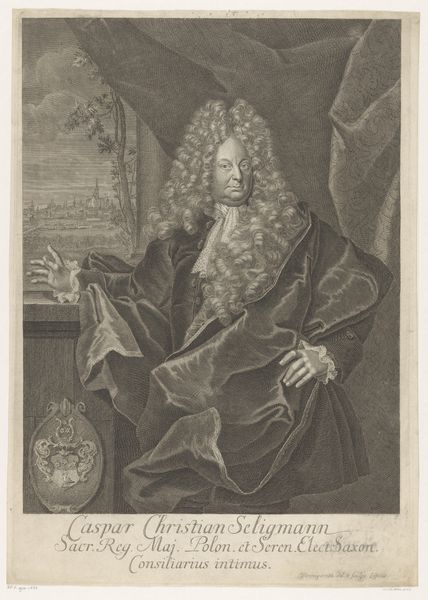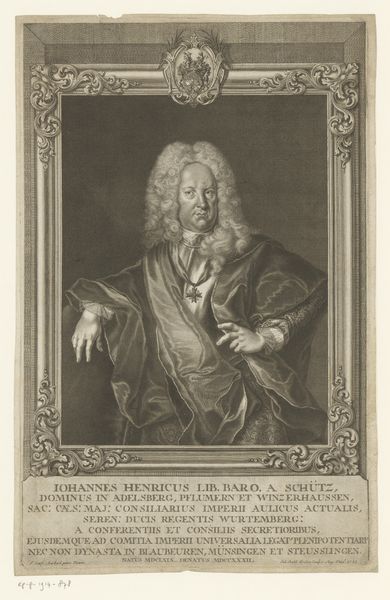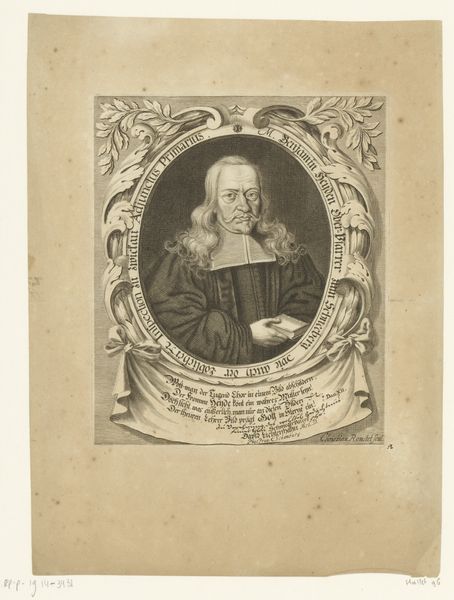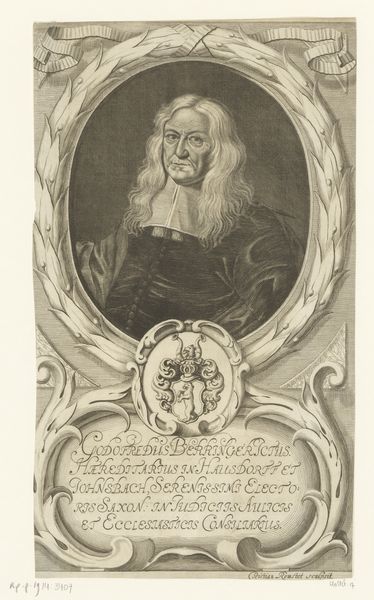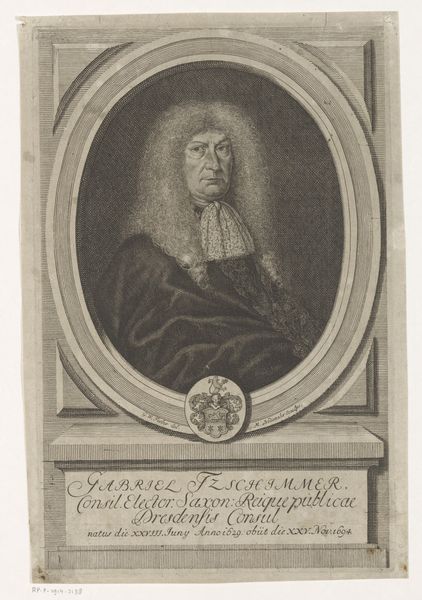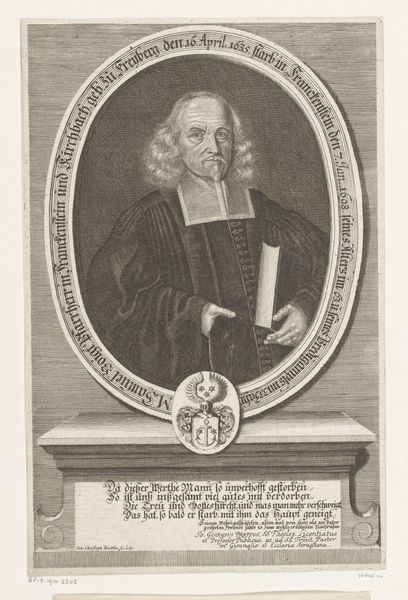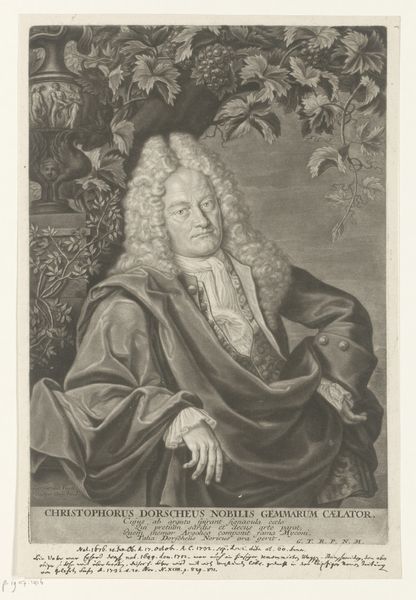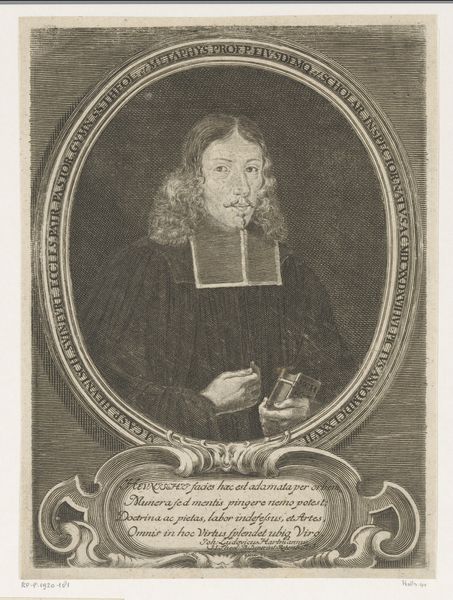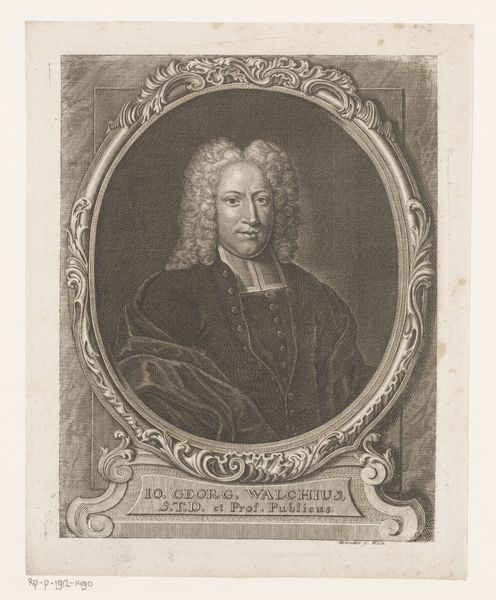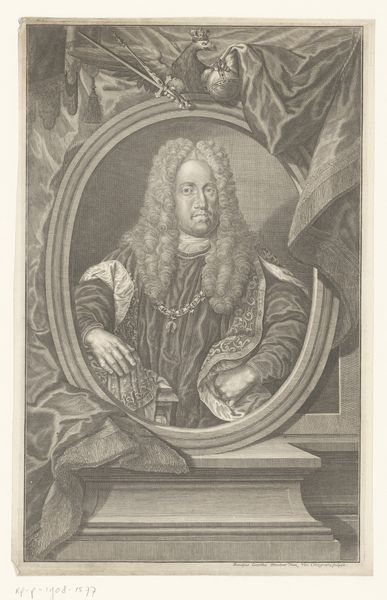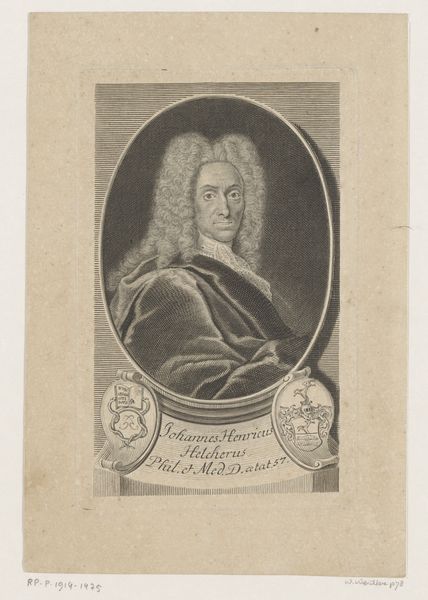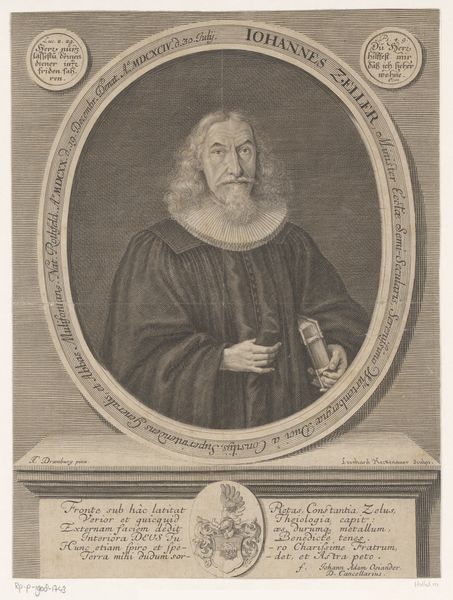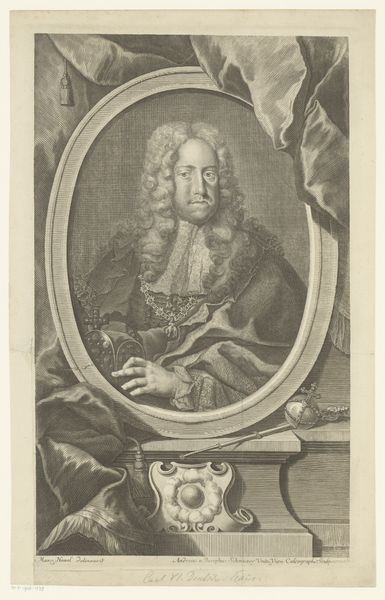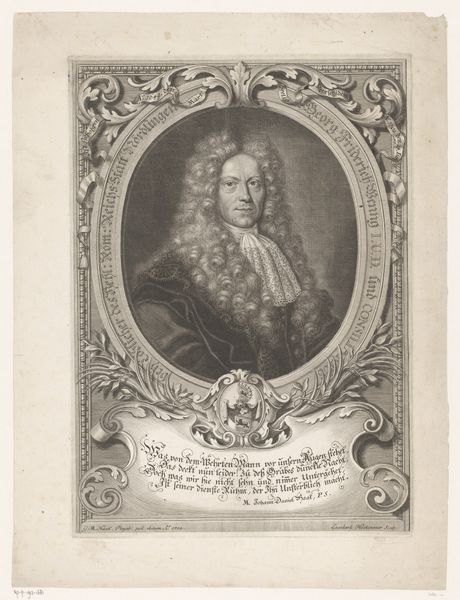
print, engraving
#
portrait
#
baroque
# print
#
old engraving style
#
portrait drawing
#
history-painting
#
engraving
Dimensions: height 321 mm, width 206 mm
Copyright: Rijks Museum: Open Domain
Christian Romstet made this portrait of Johann Dürr, likely on paper, using engraving. Engraving is an intaglio process, meaning the image is incised into a surface, in this case a metal plate, and then filled with ink for printing. Consider how the crisp lines, and the high level of detail, from Dürr's hair, and the ornate frame, to the lettering, has been achieved. The engraver would have used a tool called a burin to manually cut lines into the metal. This highly skilled, labor-intensive process allowed for the creation of multiple copies of the portrait. The material and process speak to the social context of the time, when printmaking played an increasingly important role in disseminating knowledge, and shaping public opinion. Engravings like this one would have been relatively accessible, allowing for the image and reputation of Johann Dürr to circulate more widely. This portrait reflects not only Dürr’s status but also the cultural value placed on skill and craftsmanship in the production of images.
Comments
No comments
Be the first to comment and join the conversation on the ultimate creative platform.
